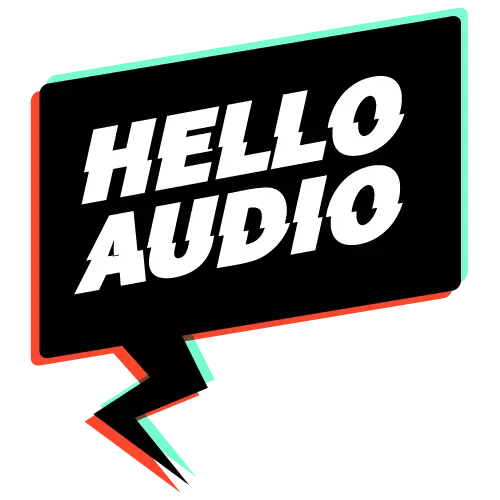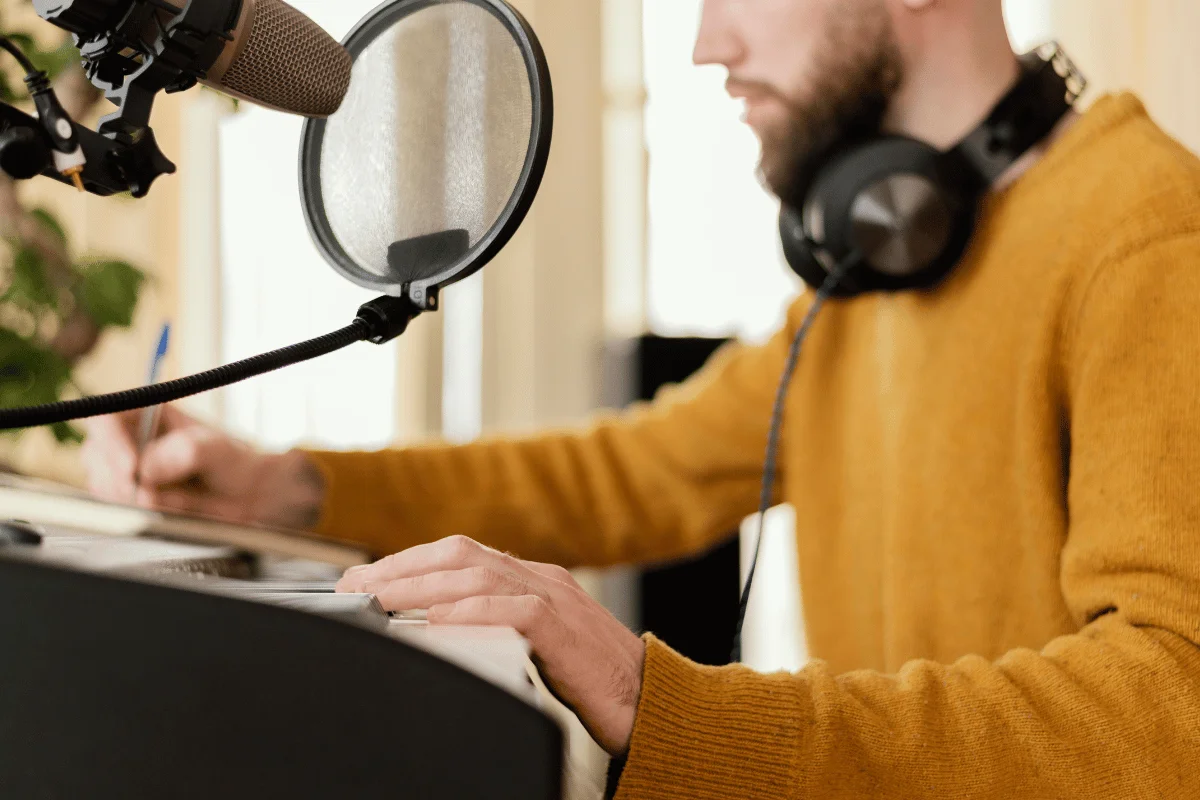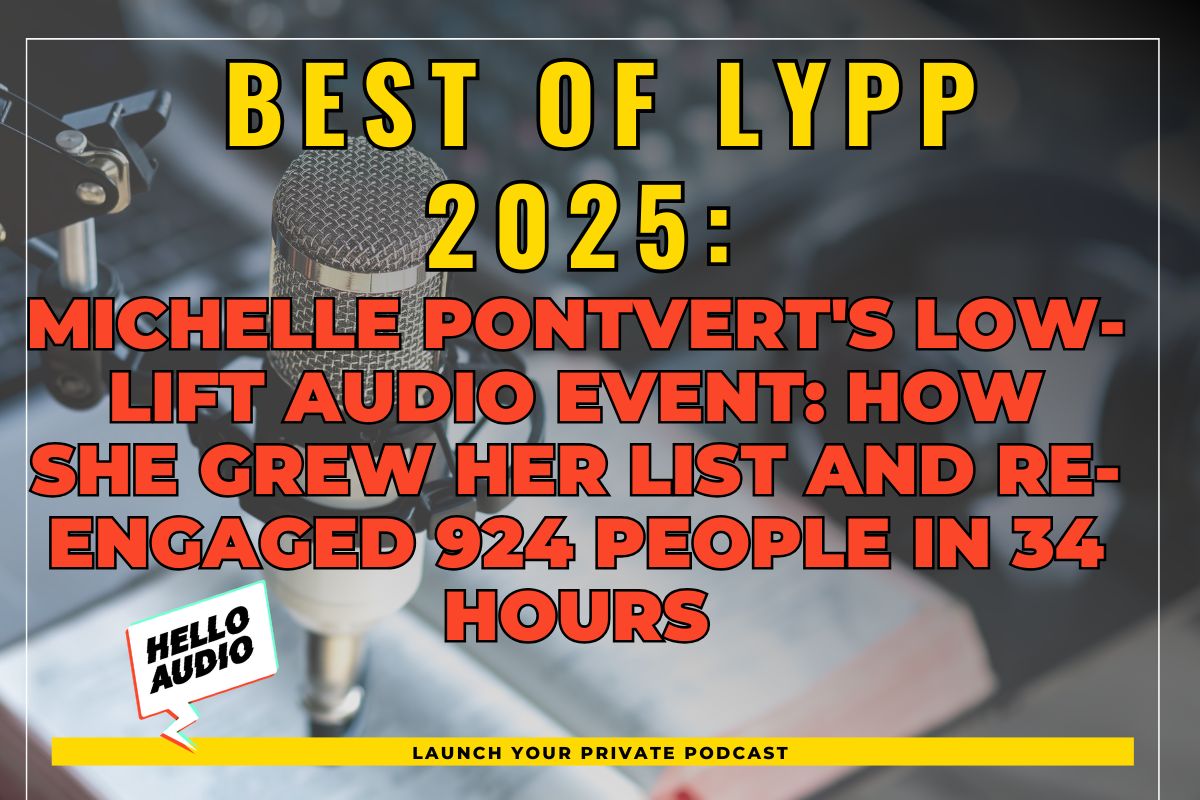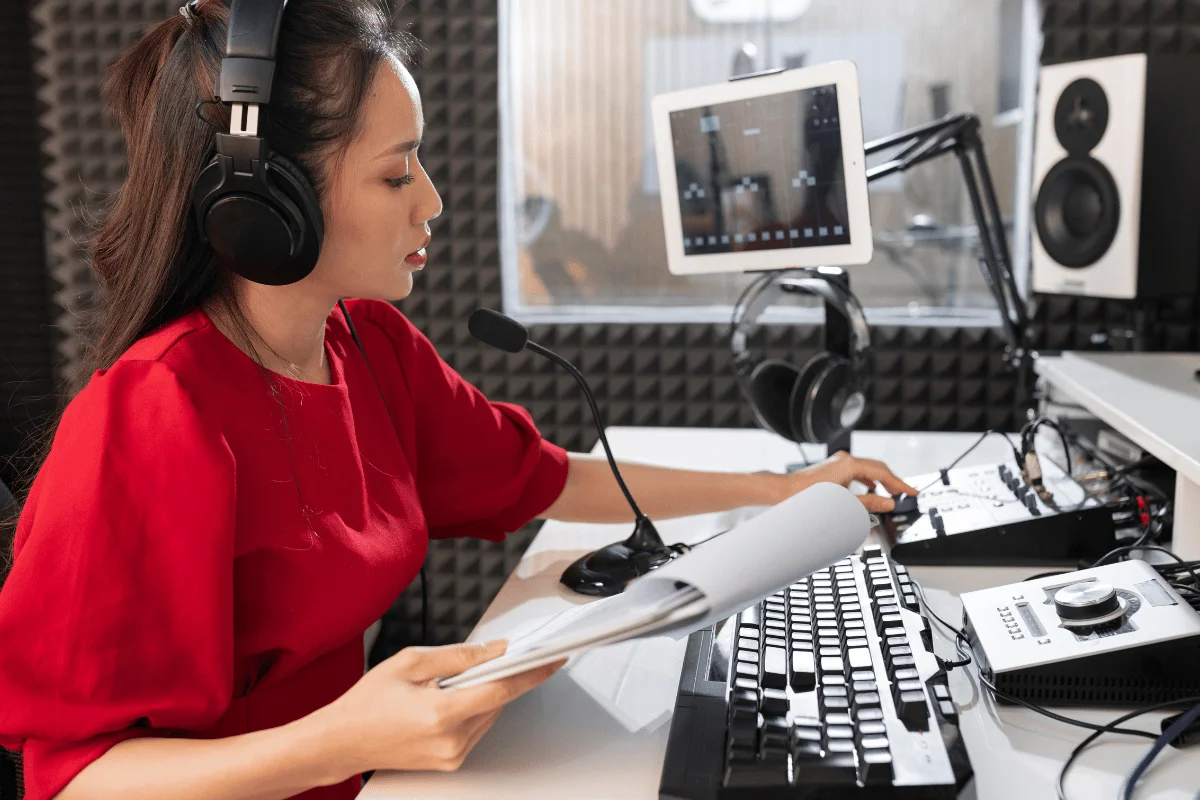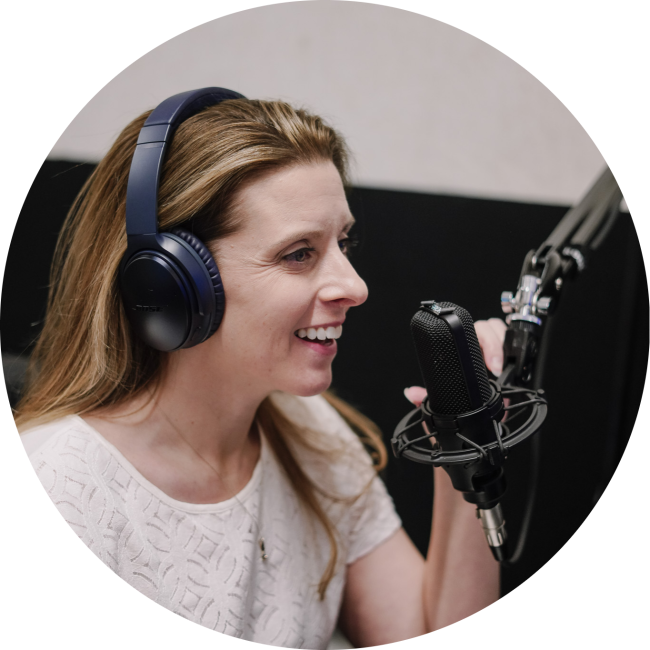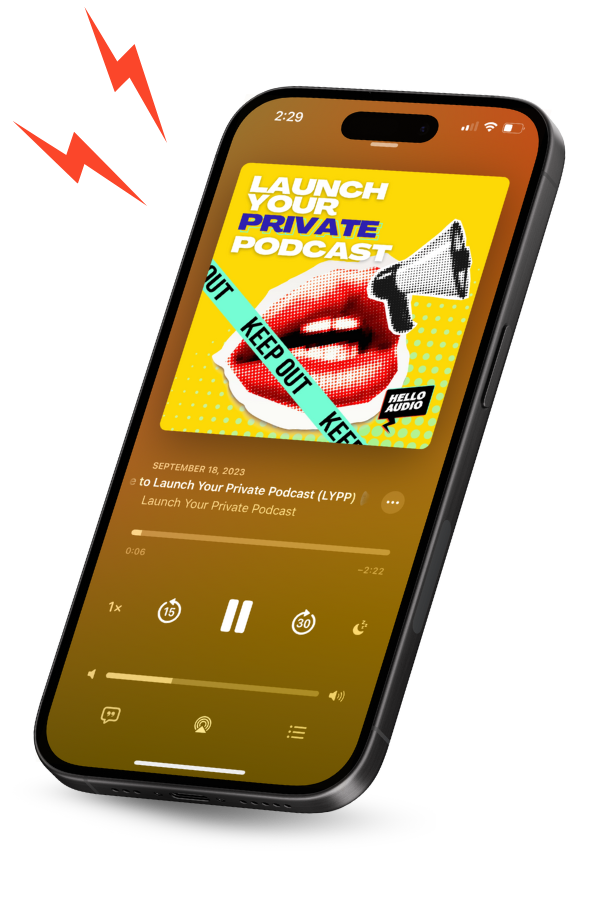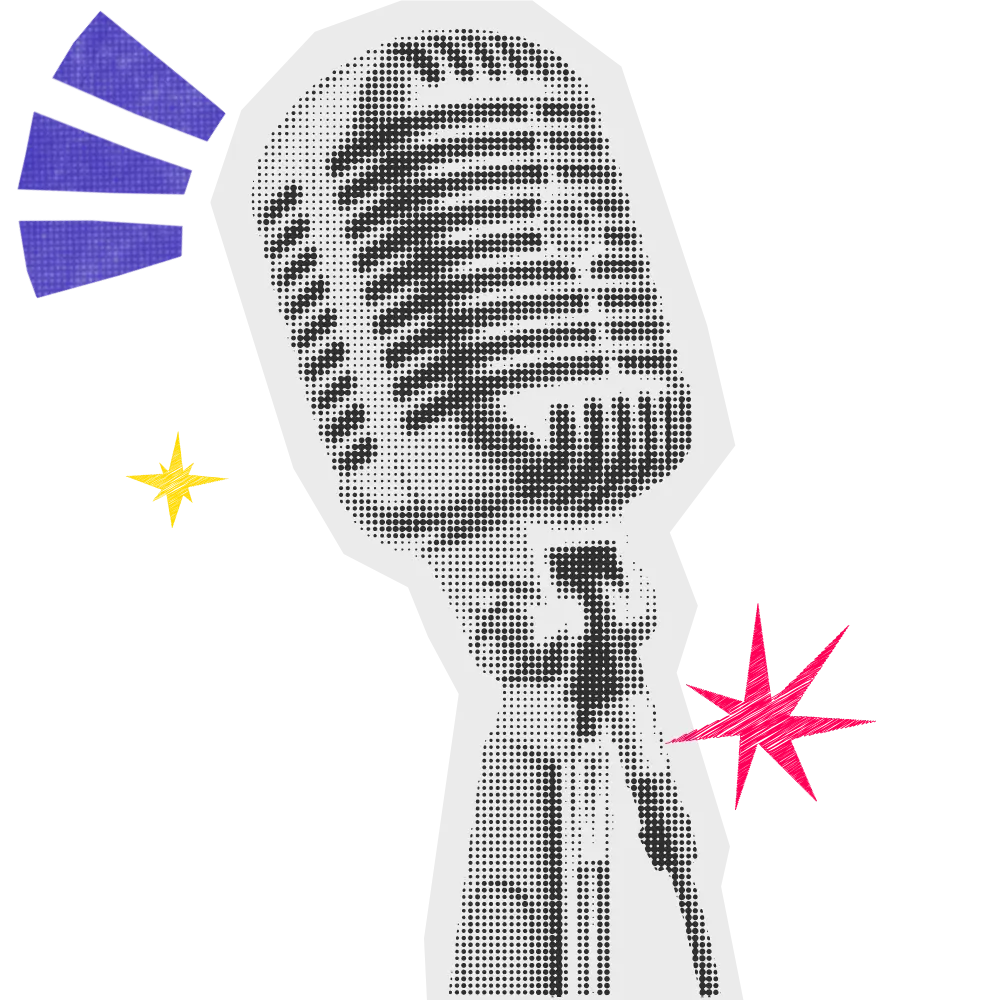There are around 2.49 billion monthly active YouTube users and about 464 million podcast listeners worldwide, proof of the impact of both platforms.
As a content creator looking to expand your reach, you might wonder which of these two platforms is more suitable.
In this Podcast vs. YouTube article, we compare both platforms thoroughly, highlighting their similarities, differences, benefits, pros, and cons. Let’s help you gain clarity and decide if you need a YouTube channel or a Podcast.
TL;DR – Podcast vs. YouTube
Running late? Here is a summary of the article:
| Podcast | YouTube |
|---|---|
| A podcast is a digital audio platform that allows you to upload audio that can be streamed or downloaded over the internet | YouTube is a video platform that lets creators upload different forms of videos that users can view, share, and interact with |
| Pros | Pros |
| It can be made with a basic setup Podcasts are easy to create Podcasts build a loyal community | Great for visuals High engagement rate High search result visibility |
| Cons | Cons |
| Limited visuals can limit engagement Not the best visibility for search engines The podcast market is slightly oversaturated | YouTube has very high competition You need to understand the platform’s algorithm for success on the platform Better production quality requires some technical skills |
| Best For | Best For |
| Podcasts are better suited for creators who love audio storytelling, are on a budget, and whose target audience is niche-based | YouTube is better for creators who have strong visual storytelling skills, have enough resources for video production, and intend to reach a broader audience |
Sure about starting a podcast and want to launch your audio feed on a reliable platform?
Hello Audio is an audio content host that lets you effortlessly convert your existing audio and video files into private podcasts within minutes. The best part? You don’t need any technical skills to use our platform.
Sign up with us today, and let’s get you started.

What is a Podcast?
Podcasts are a popular form of digital media that delivers audio to listeners worldwide. They can be downloaded or streamed and cover topics ranging from business and politics to lifestyle and entertainment.
Podcasts are typically made available as episode series. They are often freely accessible and compatible with all devices through reliable podcast apps or streaming services.
Benefits of a Podcast
Here are some common benefits of a podcast:
- On-Demand Accessibility: Podcasts can be accessed anywhere and at any time. This means that your listeners can access your podcast easily, making it highly convenient for busy people.
- Access to a large audience: Podcasts have a vast potential listener base, which you can leverage as a podcaster to build a large community, boost engagement, and possibly monetize your show.
- In-Depth Content: If you create in-depth content, you will find a loyal fan base on podcasts. The podcast platform allows you to create long-form content, upload series with different episodes, and eventually connect on a deeper level with your listeners.
- Ease of Creation: Podcasts are very easy to create. Most times, all you need is the basic equipment: a microphone, an audio streaming platform, and an internet connection.
How to Start a Podcast
The good thing about podcasts is that you can get started with a few resources.
Let’s walk you through the essential steps to launch a successful podcast that resonates with your audience and helps you achieve all your podcast goals:
- Identify a Theme: This is where you should choose the basics, like the niche you want to explore, the kind of content you want to create, and even the name of your podcast.
- Choose a Format: The next thing you need to do is choose the format you intend to use for your podcast. Here, you will answer questions like:
-
- What is the average timeframe of my podcasts?
- How often would I publish my podcast content?
- What is the podcast’s structure? Is it solo, an interview, or a panel session, or do you plan to have a co-host?
3. Create Your Channel: Next, head to your chosen podcast hosting platform and click ‘Create New Channel.’ Then, you will need to create cover art and choose music and intro and outro styles for the podcast.
4. Get Your Podcast Equipment: Here is a list of the equipment you need to start a high-quality podcast:
-
- A microphone (either USB or XLR) and a microphone stand
- Headphones
- Recording devices
- An audio interface or mixer
- POP filter.
If you are on a budget, get basic tools like a mic, recording software, and a good phone.
5. Start Recording: Once you have all this, you are ready to begin the recording process. Find a quiet spot and schedule a convenient time for your recording sessions.
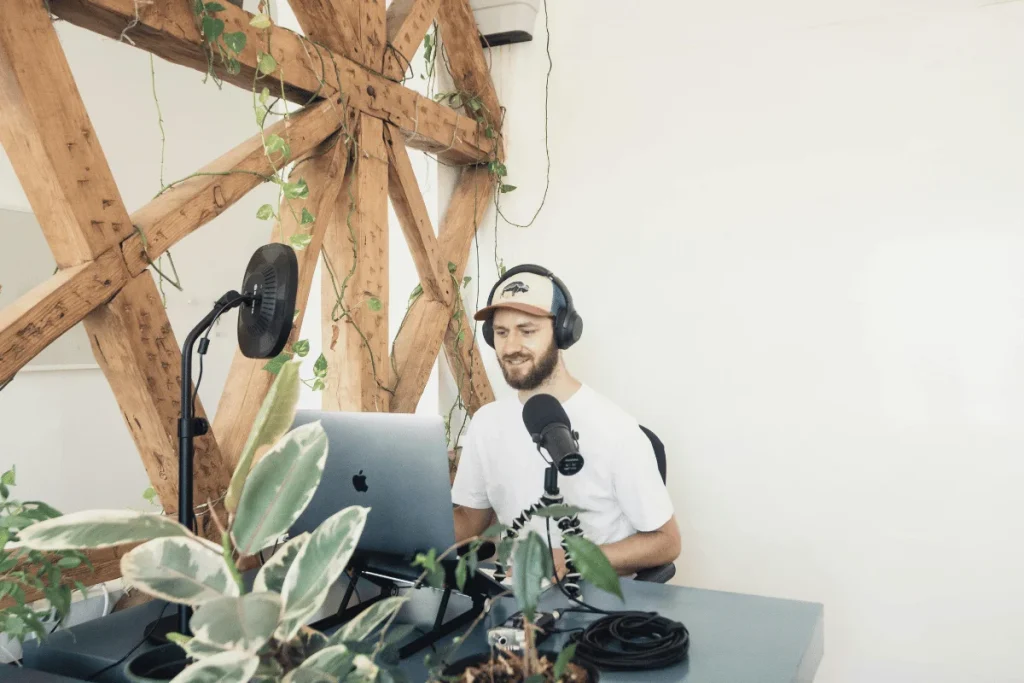
What Do You Need for a Podcast?
To begin, you need to get the right podcast tools. Here is a list of the equipment you need:
- A Recording Device: You can start with your smartphone using a recording app. Later, you can upgrade to a USB microphone.
- A Good Headphone: This will reduce the noise and produce better audio quality for your recording, leading to faster podcast growth.
- Audio Editing Software: Software like Audacity or GarageBand will help you cut and arrange your audio files accordingly.
- A Podcast Hosting Platform: You will need a platform to host your podcasts on so that they are accessible to listeners.
Hello Audio is an excellent software for publishing your podcast after recording. We offer podcast personalization and advanced automation. With our software, you can repurpose your existing media files into a private podcast format, giving your content more visibility.
Sign up with us to kickstart your podcast journey.
How to Grow a Podcast
If you’re wondering how to grow a podcast, here are some tips that can help you:
- Optimize Your Podcast for SEO: Optimizing your podcasts makes it easy for your audience to find you. Here are some tips:
-
- Use relevant keywords in your podcast title, description, and episode titles.
- Include timestamps of different segments in your show.
- Add CTAs to your podcasts, encouraging listeners to engage.
- Add transcripts to make your podcast easily accessible and improve your rankings.
2. Leverage Social Media: Building a community on social media makes it easy to direct people to listen to your podcasts. You can incorporate relevant hashtags and participate in trends that can make your posts discoverable.
3. Submit Your Podcast on Every Directory: Make sure that your podcast is present in every major directory, such as Apple, Google, and Spotify podcasts.
4. Stay Consistent: If you build a community and engage them regularly, they will always come back for more. Try to stay consistent on your podcast journey, and you will grow faster.
How to Monetize a Podcast
Some examples of how to monetize a podcast include sponsorship and advertisement from brands, listener donations, affiliate marketing, online course sales, and exclusive content offerings.
If you want to monetize your podcast, sign up with Hello Audio. With our platform, you can create paid subscriber-only content. You can also gain valuable insights into your podcast’s performance, such as subscriber growth, engagement metrics, and revenue generated from paid subscriptions. This data can help you make more informed decisions.
Our platform also integrates with Stripe, making the entire payment collection process easy and hassle-free.
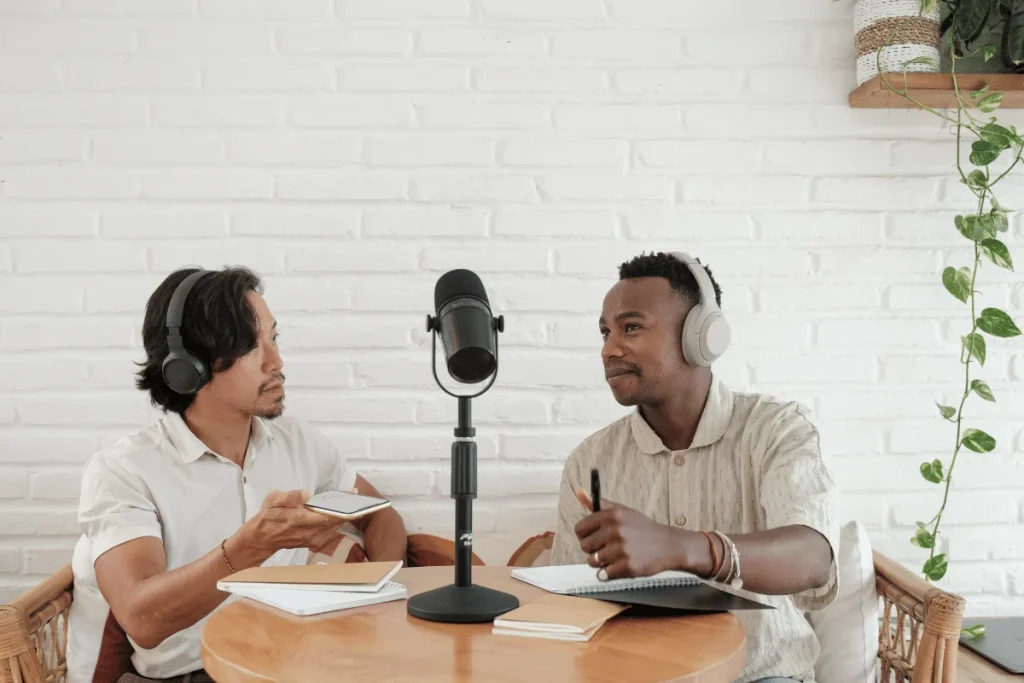
What is YouTube?
YouTube is a visual platform where creators can share different kinds of videos. Viewers can watch and interact with the content by subscribing, liking, commenting, sharing, and even creating a remix.
Access to YouTube is also completely free, and the platform works on all kinds of devices. Its visual appeal makes it desirable for users worldwide.
Benefits of YouTube
YouTube is now widely popular mainly due to the following benefits:
- Wide Reach: Since many people are familiar with the YouTube platform, its traffic is very high. This means that as a creator, you can reach a broad audience with the right content. Connecting with a diverse audience can give you new recognition, opening the door to more opportunities.
- Community Building: The YouTube community is robust, and creators who stay consistent and offer value end up building a loyal fanbase.
- Great Search Visibility: YouTube is the second-largest search engine on the internet. This means that videos are more likely to pop up on Google if properly optimized. Creators can optimize their video titles and descriptions, allowing their content to reach an even wider audience and make more impact overall.
- Monetization Opportunities: YouTube offers different monetization opportunities. When creators meet certain requirements, they can earn money off the platform.
How to Create a YouTube Channel
Whether you are looking to entertain, educate, or inspire, you will certainly find an audience on YouTube. Creating a channel takes less than an hour on average. You can use the YouTube app or website to register and start your content journey.
Follow these easy steps to begin:
- Go to YouTube.com on your Google Account.
- Navigate to settings on your Google account by clicking on your profile photo.
- Under ‘Your Channel,’ click ‘Create a Channel.’
- Enter a name for your channel and click ‘Create Channel.’
With these four steps, you can own a YouTube channel.
What Equipment Do You Need to Start a YouTube Channel?
Starting a high-quality YouTube channel requires good equipment. However, this should not deter you from taking the first step. With some basic substitute equipment, you can still create and run a decent channel.
Here are some of the equipment you need:
- Recording Device: You can use an actual camera to record, or if you have a good phone, the phone’s camera will suffice.
- An External Microphone: You will need to amplify your voice; an external microphone will help you do this.
- Lighting Equipment: A ring light and a well-lit space will serve well for recording.
- Tripod Stand: You will need a tripod stand to keep your phone or camera stable while you record.
- Video Editing Software: You need editing software like Capcut or Inshot to cut and arrange your videos properly.
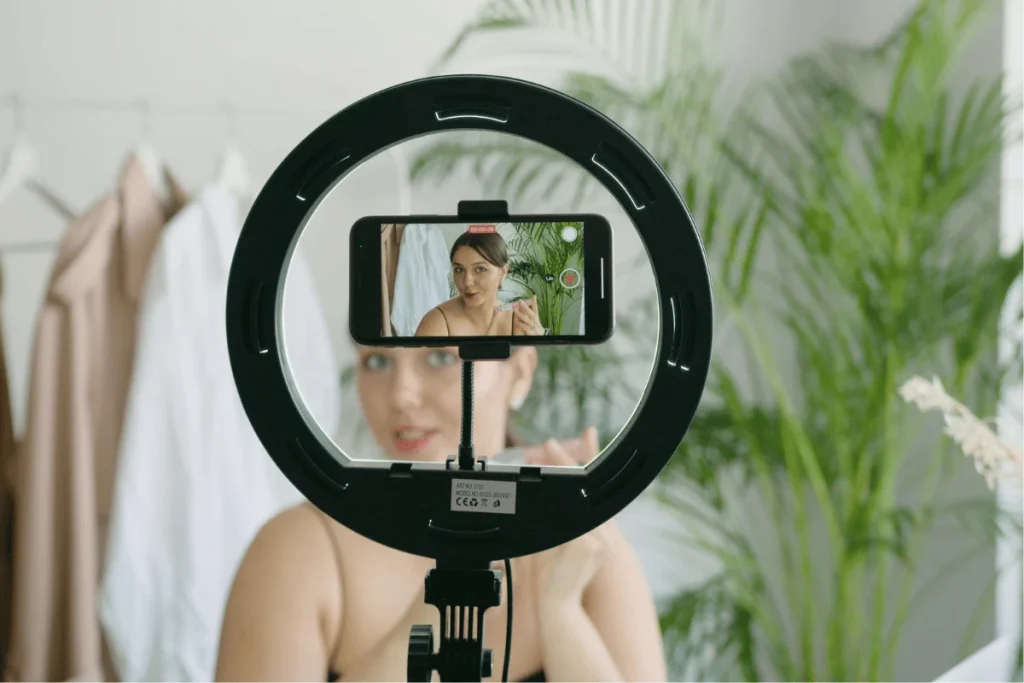
How to Grow Your YouTube Channel
Growing a YouTube channel needs a combination of consistency and strategy. Here are some effective ways to grow your YouTube channel:
- Create Quality Content: Find a niche you are passionate about, and create relevant content around this niche. Research your topics properly before talking about them.
- Optimize Your Video Titles and Thumbnails: Invest in making great thumbnail designs and compelling titles for your YouTube channel.
- Use the Right SEO Strategies: Add keywords in your video titles and descriptions, use hashtags, add end screens and cards to keep people looped to your channel, and implement general SEO strategies.
- Promote Your Videos on Social Media: Post clips of your video on your other social media platforms and add a link to direct people to the channel for the full video.
- Stay Consistent: Get a posting routine and maintain it. The YouTube algorithm favors consistency.
How to Get Monetized On YouTube
There are a couple of ways that the platform offers monetization. They include:
- The YouTube Partner Program: To become a YouTube partner, there are two eligibility requirements.
-
- For the first form, you must have 500 subscribers, three publicly published videos in the past 90 days, and either 3,000 watch hours in 365 days or 3 million YouTube Shorts views in the past 90 days.
- Eligibility for the second form is 1,000 subscribers and 4,000 watch hours in the past 365 days OR 1,000 subscribers and 10 million public Shorts views in the past 90 days.
2. Paid Sponsorships: Brands pay you to promote their products and services on your channel.
3. Affiliate Marketing: You can create videos and include affiliate links. This way, if someone buys a product via your link, you get a portion of the money.
4. Super Chat and Super Stickers: During a live stream, users can show support by giving you some money using the Super Stickers feature.
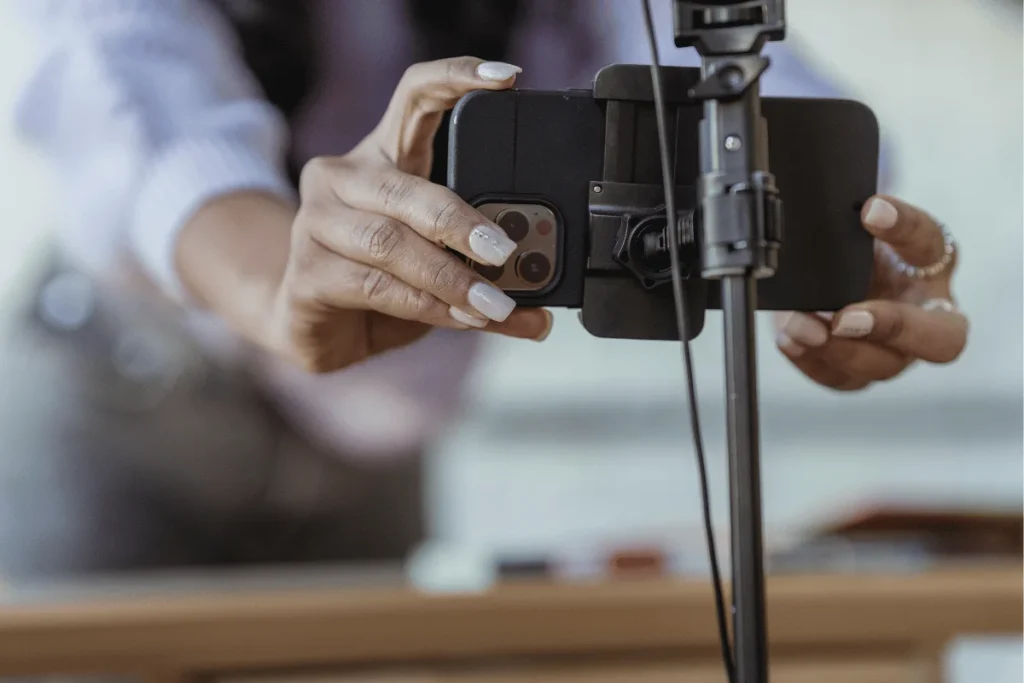
What is the Difference Between a Podcast and YouTube?
Here is a detailed comparison of both platforms:
| Aspects | Podcast | YouTube |
|---|---|---|
| Content Format | Primarily audio format | Combines both audio and visual format |
| Audience Engagement | Engagement is through email, social media, or listener feedback. Also allows taking calls from listeners during the show | Engagement is through comments, shares, live chats, and social media discussions |
| Production Requirements | Minimal tools required | More professional tools and experience required |
| Cost | More cost-effective | You might need to invest in good quality, costly equipment, like lighting and camera |
| SEO and Discoverability | The impact of SEO is not as strong on Podcasts | YouTube benefits enormously from SEO |
| Monetization | Sponsorships and Advertisements Listener Donations and Crowdfunding Affiliate Marketing Premium Content or Subscription Models Merchandise Sales | Paid Sponsorships Affiliate Marketing Channel Memberships Merchandise Sales |
| Audience Reach | Podcasts have a smaller but highly engaged audience | YouTube has a broader audience |
| Time Investment | Podcasts require less time to create | Creating a YouTube video can be very time-intensive |
| Platform Algorithms | Podcasts are less driven by algorithms and more by word-of-mouth recommendations | YouTube’s algorithm promotes content based on user’s engagement with it |
| Learning Curve | The podcast learning curve is more gentle on beginners, as basic skills can go a long way | The YouTube learning curve is steep since it requires advanced skills for proper content creation |
Similarities and Differences
Now let’s look at the similarities and differences between YouTube and Podcast platforms.
YouTube and Podcast Similarities
- Monetization Opportunities: Both platforms offer users a chance to earn money on them.
- Community Growth: Both platforms offer you a chance to grow and build a community through active involvement and consistency.
- Content Creation: You can express yourself by creating content in different forms.
YouTube and Podcast Differences
- Content Format: Podcasts are audio-based, while YouTube is visual.
- Requirements: Podcasts require less skills and equipment to begin, while YouTube requires a certain amount of skills to get good quality content.
- Portability: Podcasts are more portable since users can listen to them from anywhere at any time while multitasking. YouTube videos, on the other hand, require full concentration since they are visual.

Podcast or YouTube – Which is Right for You?
Choosing a content creator platform is highly dependent on your goals. If you prefer to be behind the camera rather than in front of it, you are on a budget, and you want a smaller niche audience, then Podcasting is best for you.
If you enjoy sitting in front of a camera, have a lot of visuals to share with your audience, and are targeting a broader audience, then YouTube is best for you.

Frequently Asked Questions (FAQs)
Here are some frequently asked questions about YouTube and Podcasts and their answers:
Which Platform is Better for Beginners – YouTube or Podcast?
Podcasts are better for beginners since they require fewer skills and tools to get started.
Is it Easier to Grow a Podcast or a YouTube Channel?
It is easier to grow a YouTube channel because the algorithm works better on YouTube. Your video on YouTube can go viral and get you lots of subscribers in a short time.
Can I Repurpose My Podcast Content on YouTube?
Yes. You can upload the entire podcast episodes as videos or live stream them on YouTube. This gives you a chance to build a broader community.
What Are the Best Practices for Content Creators to Thrive on Both Platforms?
Here are some strategies to implement for success on both platforms:
- Stay consistent
- Always think quality
- Optimize your content for SEO
- Engage with your audience
- Leverage available features on each platform for growth
Conclusion – YouTube vs. Podcast
Both YouTube and Podcasts are excellent platforms for expressing your ideas. Knowing your goals will help you choose the most suitable platform to get the most out of your content creation journey.
If you are looking to maximize your content strategy on podcasts, leverage Hello Audio to convert your existing media content into private podcasts. Our platform also has special features like unique listener insights and seamless integration with various audio players, like Spotify, Apple Podcasts, and more. You can use these to build a stronger relationship with your audience and make your podcast journey seamless.
Try out an instant demo on Hello Audio today.

